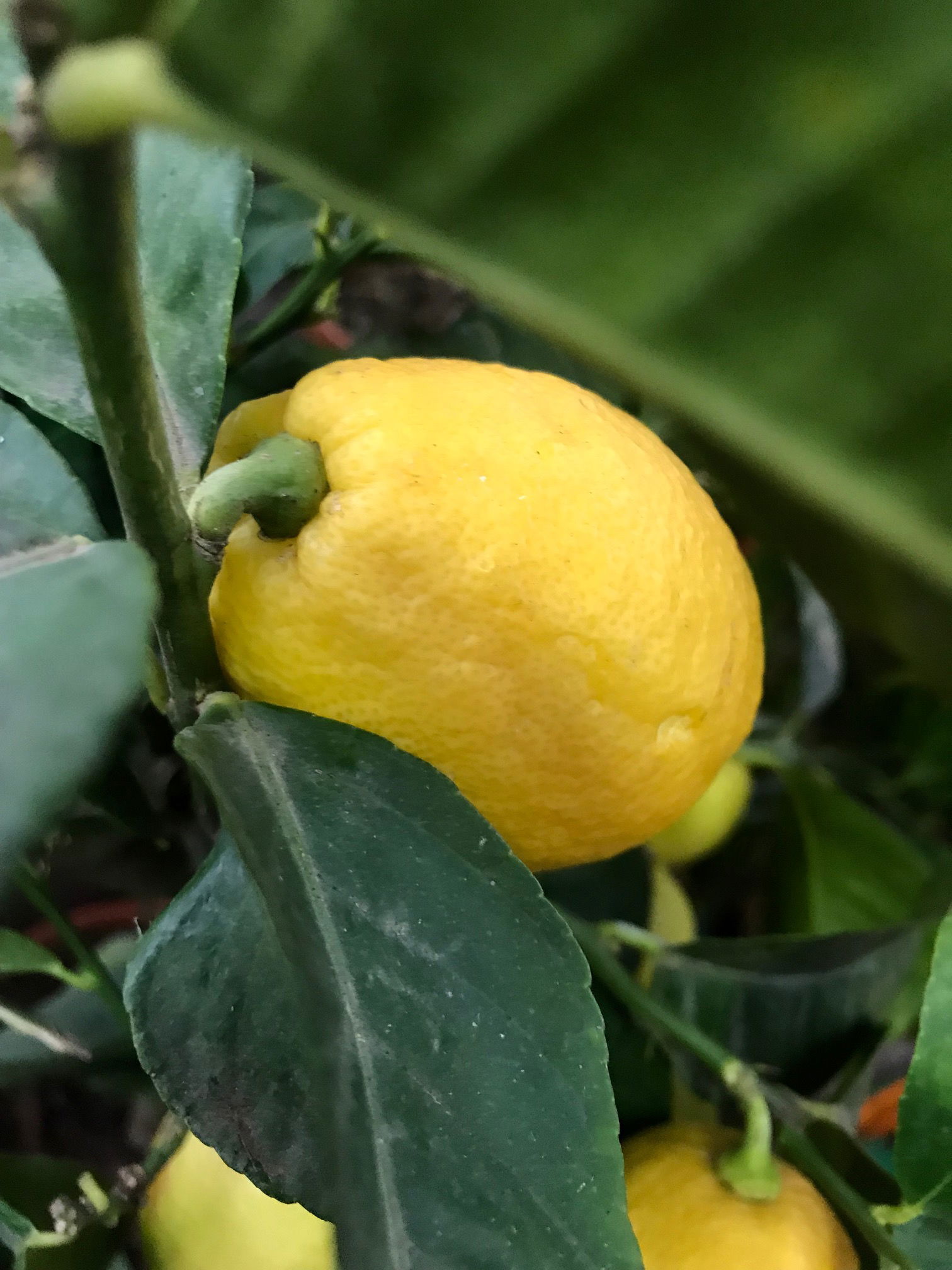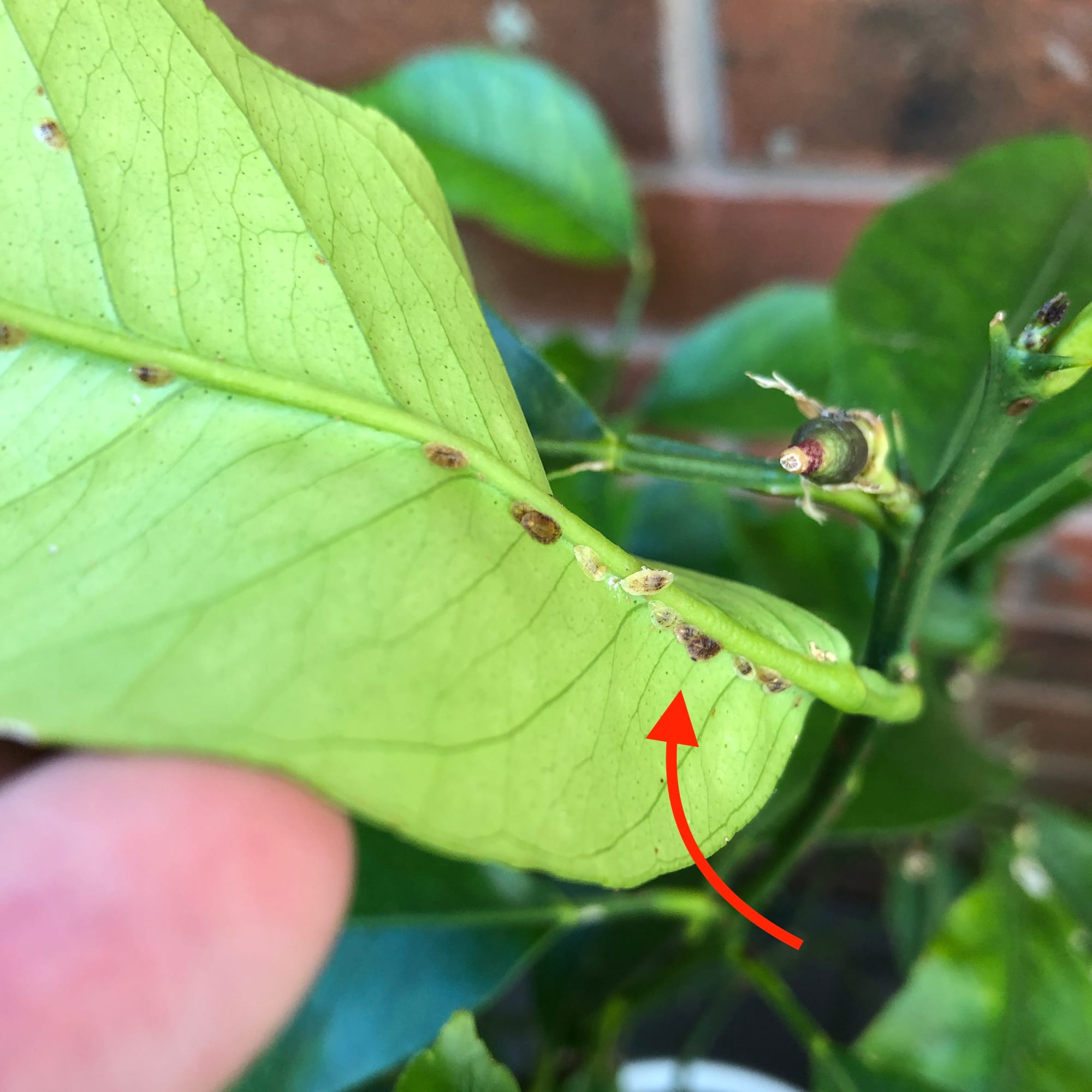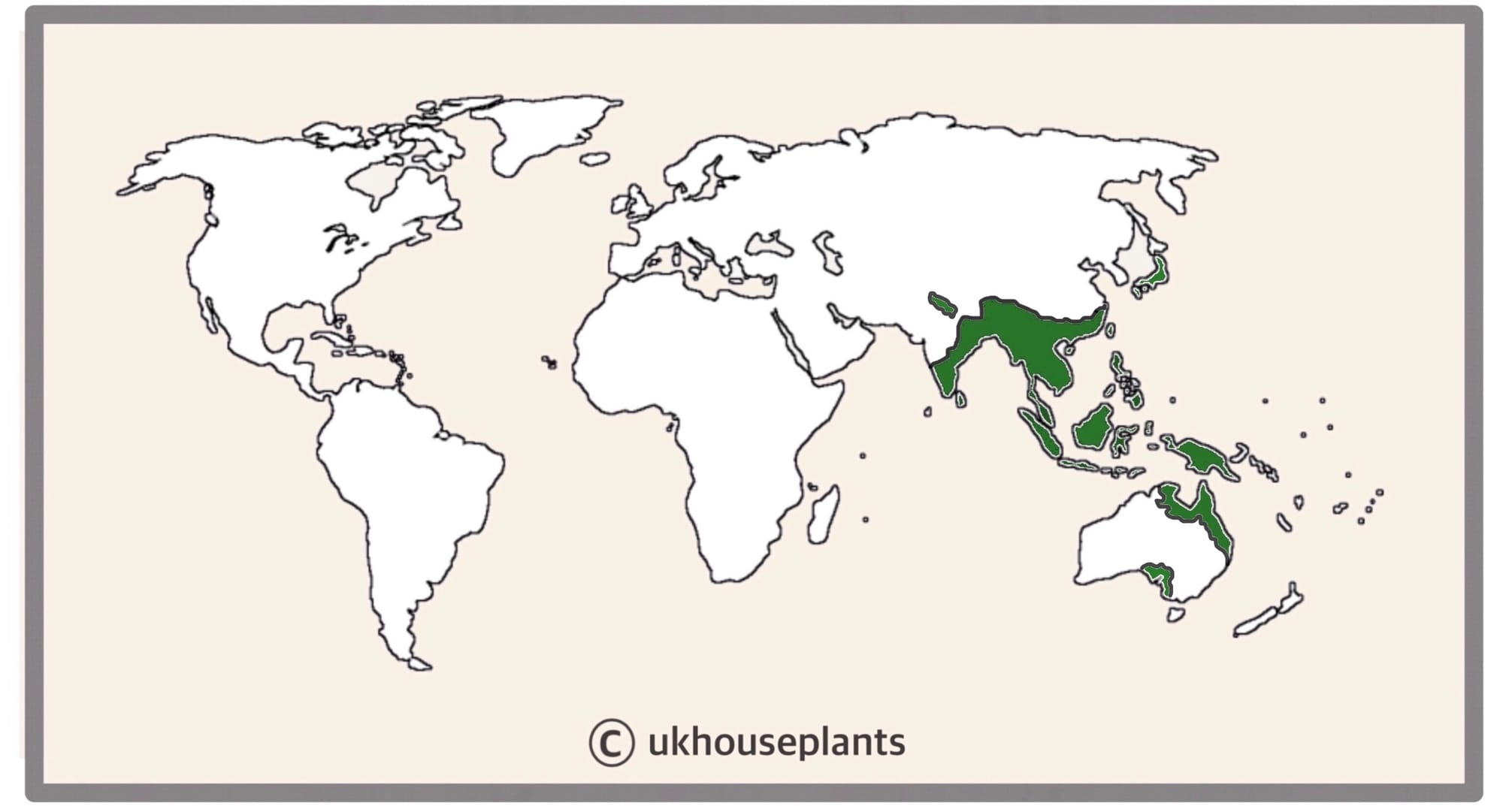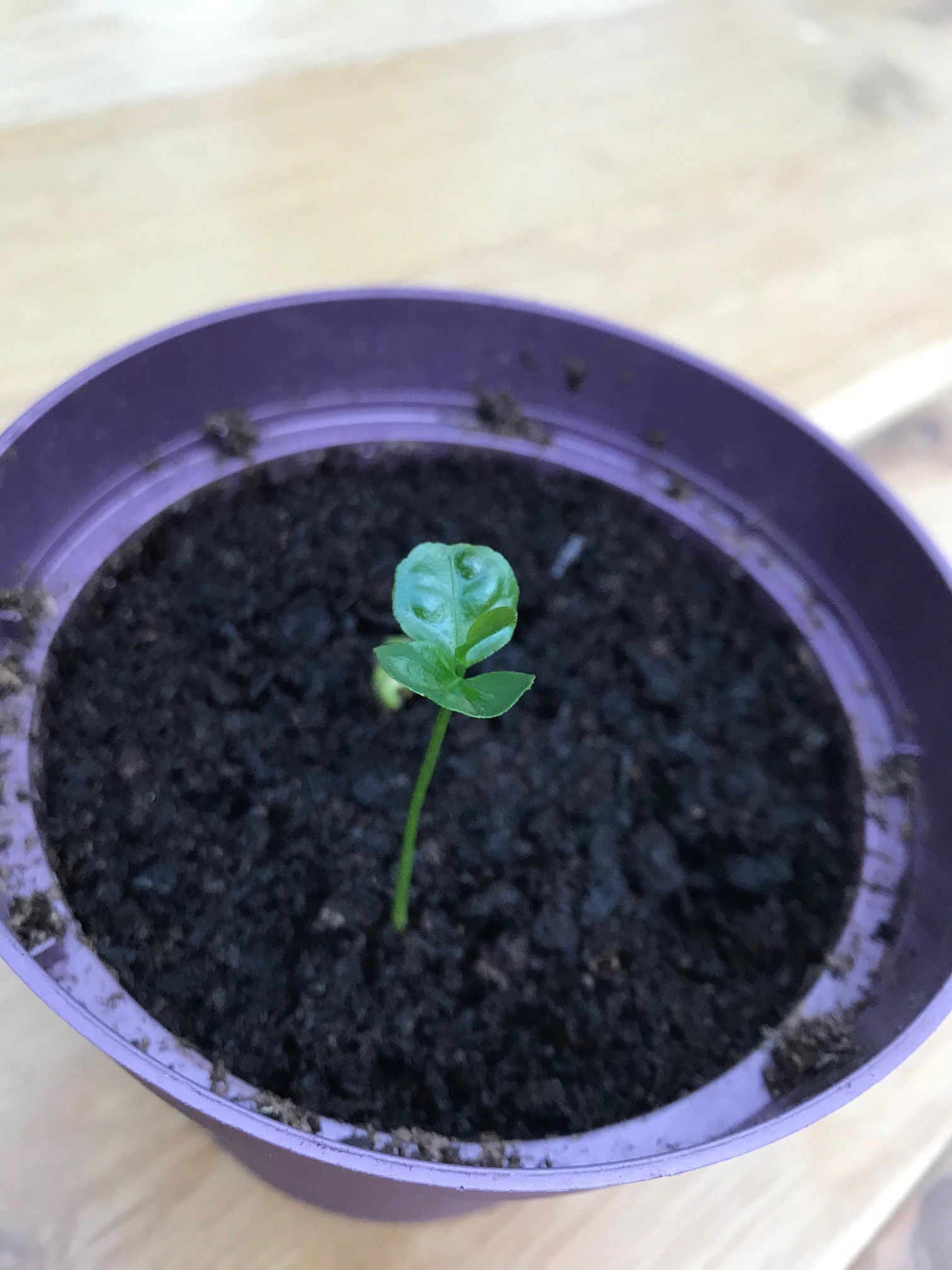
Citrus limon
Listen to the Citrus Tree Podcast here!
Contents
- Top Tips
- Location, Water, Humidity & Fertilisation
- Dormancy Care & Annual Fruits
- Common Issues
- Origins, Temperature, Propagation, Repotting & Toxicity.
Need the answer to a specific plant query? Book a 1-to-1 video call with THE HOUSEPLANT DOCTOR™, the website's friendly author, to overcome and address your niggling problem! Available on iMessage, WhatsApp, Facebook Messenger & more.
Top Tips & Info
- Care Difficulty - Moderate
- Provide a location with several hours of direct sunlight, especially in the autumn and winter when the nights are at their longest. Steady levels of humidity and temperature must be fulfilled to avoid sudden lower leaf loss. Scroll down to 'Common Issues' for more information.
- The ukhouseplants' phrase of 'drenches between droughts' must be empathised with Citrus Trees. Only rehydrate the soil once the majority has dried out.
- While the specimen is in bloom or fruiting, be sure to use a potassium-based feed every four waters - Tomato Food or 'Citrus' labelled fertilisers are an excellent choice. Revert to a 'Houseplant' labelled feed once this period is over and the plant produces new leaf buds.
- Keep an eye out for Aphids, Spider Mites and Thrips that'll come in force over the spring and summer months. Use a 'Fruit & Veg' labelled pesticide to avoid poisoning, along with a gentle hose once a week.
- Repot every three or four years, using a potting mix that has high concentrations of grit and sand - 'Citrus' labelled composts or 'John Innes No. 2' are ideal.
Location & Light - 🔸🔸
Citrus Trees must be grown in a sunny position that offers at least three hours of direct sunlight a day; shadier locations will significantly decrease the chance of fruiting. There is a 'however' though - a happy tree is one that can acclimatise quickly to its new environment. There's no point immediately placing one in direct sunlight if it's been used to a darker location in the garden centre for some time. Environmental shock can, and sometimes will lead to plant death, or at least leaf or flower loss. To reduce the chance of this, evaluate its surroundings in the garden centre - is it near a bright window, or sitting in a shady corner? Build its tolerance to direct light over the coming weeks by gradually increasing the amount of direct sunlight it receives per week. Soon it will be able to endure sunny spells that will entice bigger, better fruiting.
Water - 🔸🔸
Water liberally all year round, allowing over half of the soil to dry out in between irrigations; reduce this further during the autumn and winter. Be cautious, though, as a combination of intense sunlight and persistent droughts may result in dehydration and leaf/flower loss. Always use lukewarm water, and if tap water is chosen, allow it to stand for at least 24hrs before application. Its roots systems are quite sensitive to temperature change, so pouring cold tap water immediately into the pot will damage the plant's overall health. Under-watering symptoms include wilting or greying of leaves, little to no new growth, yellowed foliage and flower/fruit loss. Over-watering symptoms include considerable yellowing leaves, mouldy or heavy soil, zero growth, wilting and a softened stem. If you feel that root rot is to blame, be sure to hop on this link for further advice.
Humidity - 🔸🔸
Create a humidity tray to provide a moist and stable environment for your plant. If the surrounding saturation is too low or the heat too high, its leaves may start to brown over and curl, especially in direct sunlight. Hose the foliage down from time to time to hydrate the leaves and keep the dust levels down.
Fertilisation - 🔸🔸
Fertilise once every four waters in the growing months before reducing this to every sixth drink during the autumn and winter. It's recommended to use 'Citrus' feed as it provides the best blend of essential nutrients for quality growth; including nitrogen for its foliage and potassium for the development of its fruits. This feed is widely available at lots of garden centres in the forms of drip-feeders, bottled concentrates and 'Ready-to-Pour' fertilisers.
Dormancy Care & Annual Fruits
Matured specimens (six years +) will eventually bloom in the spring or summer when its previous dormancy period has been served well during the autumn and winter. As ukhouseplants has been challenged many times on this subject, we've created an acronym to help you through this process; SHORT.
The combination of short-lived droughts, cooler temperatures and longer dormant nights will all contribute to the flowering process that'll take place in the following spring. Repotting isn't mandatory, and instead might hurt the chances because of transplant shock. These steps must only be made from late autumn to mid-winter to provide the best opportunities for flowers, which will lead to the fruiting in the summer.
Sunlight
Provide a brightly lit location with a few hours of sunlight during the colder months. Never situate a Citrus Tree in a shady area that's difficult to read a newspaper as this will only hurt the chances of a bloom. Rinse the foliage from time to time while the heaters are on to counteract browning leaf-tips and remove the thin layer of dust off the foliage.
Hydration
Reduce watering so that the soil stays almost dry to reduce the chance of root rot which is a prominent issue over this period. Either check the weight of the pot or place a finger in the compost to regulate the soil moisture.
Occasional Feeds
One or two feeds during this period using Houseplant Fertiliser is all that is needed to supplement a Citrus Tree, as too nutritious soil could reduce the chance of a bloom. Once the plant exits the dormancy period in early spring, feed every 2 - 4 weeks using a potassium-based fertiliser to arouse the plants' nodes.
Reduce Everything
This one is to remind you that everything needs to be reduced - especially the temperature and irrigations.
Temperature
This is the most significant step; reduce the temperature by 5℃ compared to the summertime or place in a room that's around 15℃ (59℉). You'll be at a significant disadvantage if the ambient temperature is kept constant throughout the year, as Citrus Trees will only respond with flowers if its previous winter is cooled. Never exceed the minimum temperature as it could lead to yellowed foliage or lower leaf loss.
Common Issues with Citrus Trees
A lack of flowers is caused by an insufficient dormancy period, where the temperatures are kept more or less consistent over the year. Reduce the temperature to around 12°C (54°F) over the autumn and winter months, along with fewer irrigations to ensure a well-spent dormancy. In some cases, the absence could be the result of too little moisture or not enough light over the spring period; be sure to provide a bright spot with several hours of sunlight for the best chance of flower development.
Total flower loss can be caused by an array of different issues, including a change in location, too little hydration, too hot or cold temperatures or droughts and pests. While the plant is in bloom, keep the soil relatively moist to hydrate the thirsty work of producing flowers. Locations that are outside of the recommended temperature bracket (below), or have drastic fluctuations must also be kept off the cards. Alternatively, a setting that offers similar temperatures all year round can inhibit blooms. They'll respond very well if the autumn and winter months are a couple of degrees cooler than in summer. In essence, this will not only winterise the plant, but it'll also force it into a dormancy period which is a crucial ingredient for successful flowers in the spring. Finally, pests could be an unforeseen issue; although it's highly unlikely that an infestation will cause a sudden change in health, have a quick inspection for Spider Mites, Aphids and Thrips.
Lower leaf loss is a common and significant issue among gardeners. This unfortunate phenomenon could be a product of several different problems, most notably being dark locations, water-related abuse or environmental shock. Introduce the plant to a more well-lit area with a splash of off-peak sunlight; if caught in time, the leaf loss should stop within a week. If you feel that you're watering habits aren't up to scratch, familiarise yourself with our care tips provided at the top of this article. It's always best to under-water a Citrus Tree than over-do it, purely on its poor ability to endure continued sogginess. The final culprit could be down to a sudden relocation; if you've recently purchased the specimen, the chances are it is still acclimatising to the new environment. Although this shouldn't happen, a vastly different setting will cause sudden foliage loss and stunted growth. You'll have two options of either waiting it out or presenting a more Citrus-friendly environment, mentioned in the 'Location & Light' section. If you're still unsure of what to do, don't hesitate to book a 1-to-1 call with THE HOUSEPLANT DOCTOR™ to get his expert advice on this issue!
Mould developing on the soil means two things - too little light and over-watering. Despite the harmlessness of the mould, it'll prove unsightly to most gardeners and is therefore removed once known. To remove, replace the top two inches of the soil for a fresh batch of 'Citrus' compost, or 'John Innes No. 2'. Either increase the amount of light received (no direct sunlight for the first few weeks to prevent environmental shock) or decrease the frequency of waters slightly. If the mould is accompanied by yellowing lower leaves, you may also have a case of root rot.
 If your Citrus Tree's leaves or stems are being covered by small brown bumps, it'll most likely be pest called 'Scale'. Click on the link to learn more about eradication.
If your Citrus Tree's leaves or stems are being covered by small brown bumps, it'll most likely be pest called 'Scale'. Click on the link to learn more about eradication.
Never allow temperatures to dip below 8ºC (46ºF) as irreversible damage will occur in the likes of yellow foliage and weakened health. When this happens, remove the severely affected areas and immediately improve growing conditions - never cut through softened yellow growth, and only around brown, crispy squares. As rehabilitation can take several months because of its slow-growing nature, be sure to provide a stable location with better growing conditions to speed this process.
Too low humidity can cause browning tips with yellow halos on juvenile leaves. Although this won't kill your specimen, you may want to increase the local moisture to prevent the new growth from adopting these symptoms. Mist or rinse the foliage from time to time and create a humidity tray while the heaters are active to create a stable environment. The browning of leaf-tips on older leaves is wholly natural and is the product of extensive photosynthesis during its life.
Environmental Shock is a familiar occurrence with newly-located specimens, that usually results in stunted growth and lower leaf loss (common). When a plant is relocated into a new, unfamiliar setting, the effects can be catastrophic. The humidity, temperature and light levels will all suddenly shift into different proportions, inflicting great stress the individual. There are two options of addressing this issue; either wait it out or relocate it into a more Citrus-friendly environment. As long as the specimen appears healthy with little change to its pre-existing leaves, new nodular growth should emerge in the following months.
Curled leaves and dried brown edges are the result of too little water and over-exposure to the sun. Although Citrus Trees can naturally do well in sun-filled locations, those that haven't acclimatised to the harsh rays will show signs of sun-scorch and environmental shock. Gradually increase the amount of light every few days, starting from an indirect location to a few hours of morning/evening sun over a few weeks. Prolonged exposure will significantly speed the process of dehydration, so consider transplantation into a bigger pot in the spring to wrap the roots around moister soil.
Origins
The genus, Citrus, originates from Australasia and has been used agriculturally/medicinally by indigenous cultures for thousands of years. From there, its cultivation spread to Austronesian tribes in Polynesia, Micronesia and neighbouring islands, and then to the Middle East through to mainland Europe via the 'Incense Trade Route'. In 1753, Carl Linnaeus was one of the first to formally describe the genus, using the ancient Greek word for Cedar (κέδρος) which refers to the similarity of its inflorescences scent to a Cedar tree.
 The Distribution of Citrus
The Distribution of Citrus
Temperature
8° - 24°C (46° - 75°F)
H1c (Hardiness Zone 11) - Can be grown outdoors between late spring and summer throughout most of the UK while nighttime temperatures are above 8℃ (46℉). If you decide to bring the plant outdoors, don't allow it to endure more than an hour of direct sunlight a day as it may result in sun-scorch. Regularly keep an eye out for pests, especially when re-introducing back indoors.
It's mandatory to allow temperatures to dip below 15°C (59°F) during the night in the autumn and winter to stimulate flower growth in the spring. If you're only into keeping them as ornamental plants, temperature fluctuations won't need to be as important. Do not exceed the minimum temperature of 10°C (50°F) for the avoidance of sudden leaf loss and death.
Spread
Up to 3m in height and 2m in width. Keeping the tree potbound and pruned will help maintain the overall size, along with a better chance of flowering.
Pruning & Maintenance
During the early spring, prune back leggy growth to promote a bushier appearance. Be careful of the sharp thorns and skin-irritant sap that lay just behind the foliage line. Using a clean pair of secateurs, prune just above the nodes, keeping the wounds as simple as possible. Remove any debris or diseased-affected leaves to improve both the growing conditions and its overall health.
Propagation
Via Seed or Stem Cuttings. Cultivating all Citrus Trees via seed is fun and cheap, with results showing in the first couple of months.
Seed Sowing - Choose a few seeds that are at least 0.8cm (0.3 inches) in length, with no visible signs of disease or damage. Soak them for 24 hours in lukewarm tapwater to stimulate quicker germination rates. With a 7cm (3 inches) pot, submerge the seeds around 2cm deep in a well-draining soil - 'Cactus & Succulent', 'Citrus' or multipurpose composts are acceptable. Maintain evenly moist soil, allowing the top layer to dry out in between waters to prevent over-watering. Provide a bright, warm location away from direct sunlight or sudden temperature change. Growth won't take too long, so you'll only have to wait up to six weeks for its leaves to emerge. Fertilise with a general plant food after three months of substantial growth to fuel further the development. Expect the appearance of fruits around seven years after the sow-date.
 Sowing seeds from a lemon or orange is fun and easy!
Sowing seeds from a lemon or orange is fun and easy!
Stem & Eye Cuttings (Moderate) - This method of propagation is troublesome without the aid of bottom-heat and a controlled environment. Choose the healthiest, most established stems that are wooded, yet still juvenile enough to bend slightly, being just thicker than a pencil. Each cutting should only have ONE leaf, and a 2cm portion of stem to either side of the node. With a clean pair of secateurs, cut directly below a node at an angle and slice the bottom 3/4cm of the stem's skin to expose the cambium. Situate the cutting into moist 'Cactus & Succulent' or 'Citrus' labelled compost, with the only the leaf and stem's upper tip sticking out of the soil. Blackleg can occur when the bottom wound becomes infected, resulting in propagation failure - typically caused by water-logging or a too-damaged wound. Maintain bright light and evenly moist soil with the avoidance of direct sunlight or cold draughts. Wrap the pot (& foliage) in a transparent bag or within a miniature greenhouse, and provide bottom heat of temperatures above 18°C (54°F). Remove the bag and place into individual 7cm pots once the second new leaf emerges. Follow the same care routines, as mentioned in the article's top half. This method will take up to five months, so patience and the correct environment are paramount for success!
Flowers & Fruits
Its fragrant blooms can develop at any given time of the year but are most likely to put on a show during the spring. Each flower can last up to three weeks, developing into fruits if pollination is successful. The fruits will take several months to mature, with the citric fruits becoming edible usually in early winter. Scroll up to 'Dormancy Care & Annual Fruits' for more information about how to inflict flowers onto your specimen.
Repotting
During mid-spring, repot every two years using 'Citrus' or 'Cactus & Succulent' labelled compost, or John Innes No 2 (with some perlite or grit), and the next sized up pot. If you're in an area with hard water, be sure to add some ericaceous compost to counteract the high levels of alkaline. Treat the roots like you would treat a puppy; never tinker or rearrange the root ball as both will cause transplant shock. Symptoms of this are usually wilting, greying leaves, zero growth and leaf loss. Click on this link for more information about how to deal with transplant shock.
Book a 1-to-1 video call with THE HOUSEPLANT DOCTOR™ if you'd like a personal guide to repotting your houseplant. This will include recommending the right branded-compost and pot size, followed by a live video call whilst you transplant the specimen for step-by-step guidance and answer any further questions!
Pests & Diseases
Keep an eye out for mealybugs, aphids, spider mites, scale, thrips, whitefly, blackfly, slugs/snails, soil mites, vine weevils & root mealybugs that'll locate themselves in the cubbyholes and undersides of the leaves, with the exception of the latter three in the soil. Common diseases associated with Citrus Trees are root rot, leaf-spot disease, scab, botrytis, rust, powdery mildew & southern blight - click here to learn more about these issues.
Toxicity
This plant is classified as poisonous to pets, so if small sections of the stem/leaves are eaten, vomiting, nausea and a loss of appetite may occur. Consumption of large quantities must be dealt with quickly; acquire medical assistance for further information. The fruits are indeed edible, although some can be over-powering when not fully mature.
Retail Locations
Blue Diamond, Online Stores.
Book a 1-to-1 Call with THE HOUSEPLANT DOCTOR™
If you need further advice with your houseplants, book an advice call with ukhouseplants' friendly and expert writer today! This can be done via a video or audio call on most apps, including Facebook, FaceTime & Skype. A ten-minute call costs £5.99 (US$7), or £15.99 for thirty minutes. You can ask multiple questions, including queries on plants, pests, terrariums, repotting advice and anything in between. Please consider supporting this service to keep ukhouseplants thriving!